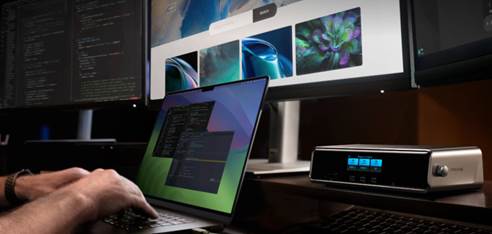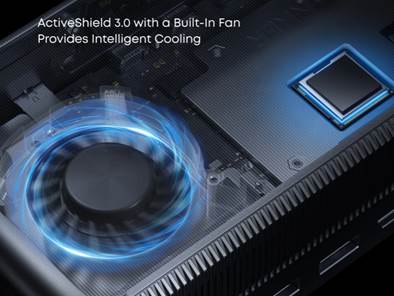A cluttered desk and
constant cable-swapping can eat into your focus more than you think. When your
laptop runs out of ports or can’t drive multiple displays, you waste time
juggling devices instead of getting work done. That’s where a docking station
steps in, acting as a streamlined hub that powers, connects, and organizes your
workspace. But can this single piece of hardware really elevate your
productivity? The answer is yes, if you choose a good docking station that aligns with your
workflow.

Why Docking Stations Improve the Way You Work
Docking stations
consolidate devices, power, and data streams into one central hub, minimizing
interruptions and maximizing efficiency. Here’s how the right dock makes a
measurable difference.
Simplified
multi-monitor setups for efficiency.
Switching between tabs on a single screen wastes seconds that add up. With a
docking station, you can easily connect two, three, or even four external
displays. Premium Thunderbolt 4 or Thunderbolt 5 docks, like Anker’s high-end
options, support dual 4K or even dual 8K displays for Windows laptops. That
means more space for complex spreadsheets, editing timelines, or multitasking
across apps without clutter.
Reliable power
delivery that keeps you moving.
Battery anxiety kills workflow momentum. Modern docks provide 85–140W Power
Delivery (PD) for laptops, ensuring they stay charged even under heavy loads.
Some models go further, offering multiple USB-C ports at up to 100W each,
allowing you to charge your laptop, tablet, and phone simultaneously. Instead
of scattering chargers across your desk, one dock keeps everything powered from
a single outlet.
Faster data
transfers for creative professionals.
If you handle large video projects, raw photos, or CAD files, waiting for
transfers can drag productivity down. High-performance Anker docks provide
40–80 Gbps bandwidth or 10–40 Gbps USB-C/USB-A ports, cutting transfer times
dramatically. Anker’s Thunderbolt 5 docks, for example, can move a 150 GB file
in just 25 seconds, saving professionals hours every week. Built-in SD and TF
card readers with UHS-II support are another boon for photographers and videographers.
Streamlined
connectivity for all devices.
Instead of plugging and unplugging peripherals, a dock creates one central
point of connection. Whether it’s a keyboard, mouse, audio interface, webcam,
or Ethernet line, everything is accessible via a single USB-C cable to your
laptop. Some advanced docks even offer 2.5GbE Ethernet for faster and more
stable connections—ideal for video calls, large file sharing, or cloud-based
collaboration.
Ergonomic and
workspace benefits.
Beyond technical specs, docking stations also improve desk comfort. Certain
models, like the
Anker 675 USB-C docking station, double as monitor
stands, raising screens to eye level for healthier posture. Others integrate
wireless phone charging pads, reducing clutter and freeing up outlets. These
subtle design choices reduce physical strain and keep your desk clean, which
directly supports concentration.
Thermal
management and stability for long sessions.
Intensive workloads generate heat that can slow performance. Quality docks integrate
active cooling systems or heat-dissipating designs, ensuring stable operation
even when driving multiple displays and charging several devices. Anker’s
ActiveShield technology goes a step further, monitoring temperatures millions
of times per day to protect devices from overheating, so you can work
uninterrupted.

Conclusion
Overall, a good docking station not only adds ports but also unlocks
smoother workflows and minimizes wasted effort. From
powering dual displays to charging multiple devices at once, transferring
massive files in seconds, and reducing desk clutter, the right dock creates a
workspace designed for focus. For professionals, creators, and multitaskers,
solutions like Anker’s Thunderbolt and USB-C docks offer the speed, stability,
and smart design needed to stay ahead. One connection can transform your entire
workday into something far more productive.



